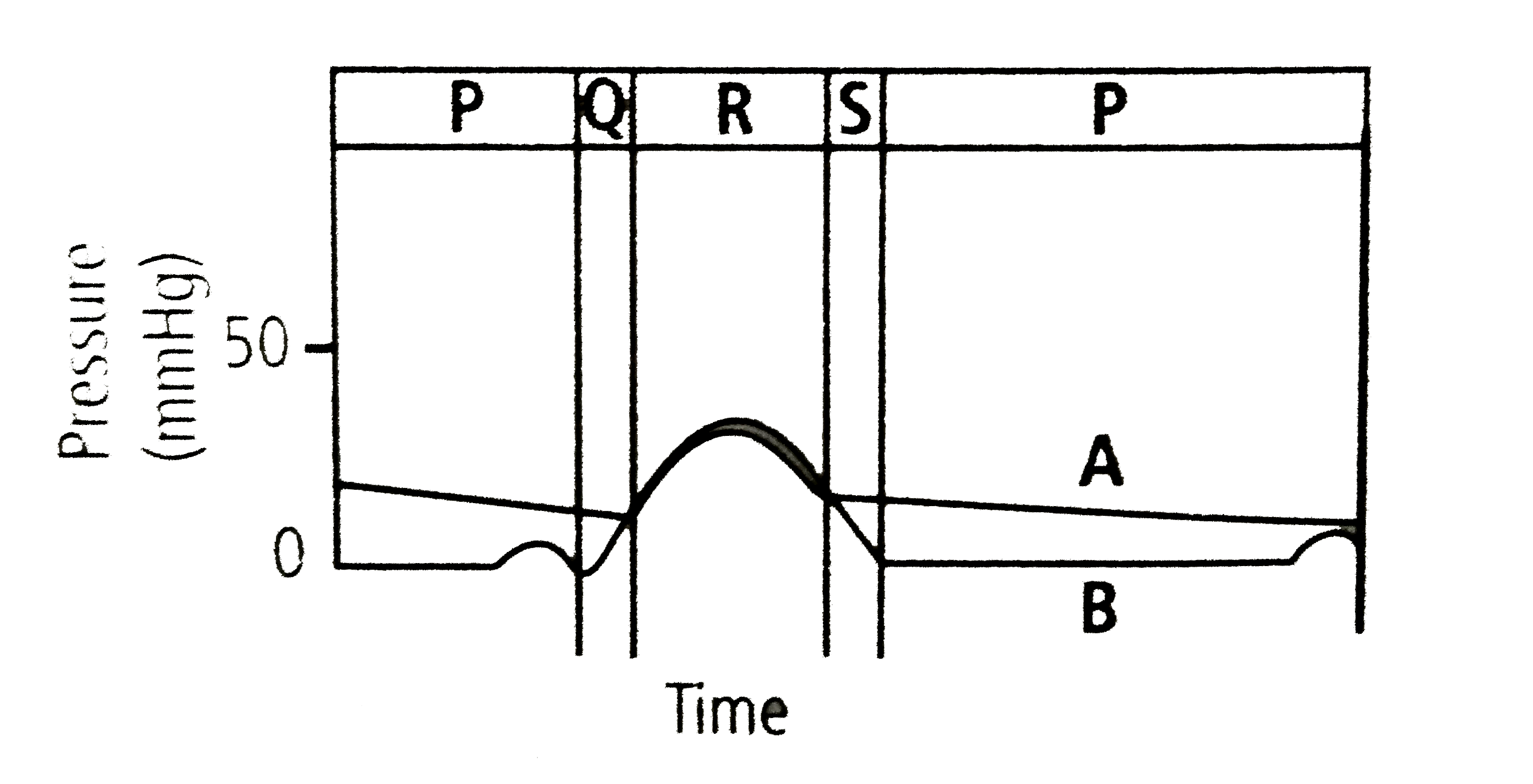During isovolumetric contraction of ventricles
Atrioventricular valves open
Pressure within ventricles decrease
Blood volume in ventricles remains constant
Semilunar valves remain open
Step-by-Step Solution:
1. Understanding Isovolumetric Contraction:
- Isovolumetric contraction refers to the phase of the cardiac cycle when the ventricles contract but the volume of blood within them remains constant. This occurs because all the heart valves are closed during this phase.
2. Valve Status During Isovolumetric Contraction:
- During this phase, both the atrioventricular (AV) valves and the semilunar valves are closed. This is crucial because it prevents blood from entering the ventricles (from the atria) and from exiting the ventricles (into the arteries).
3. Pressure Changes:
- As the ventricles contract, the pressure within them increases. This increase in pressure is necessary to eventually open the semilunar valves and allow blood to be ejected into the aorta and pulmonary artery.
4. Blood Volume:
- Since the valves are closed, the volume of blood in the ventricles does not change during isovolumetric contraction. Therefore, the blood volume remains constant.
5. Evaluating the Options:
- A. Atrioventricular valves open: Incorrect, as the AV valves are closed during this phase.
- B. Pressure within the ventricles decrease: Incorrect, as the pressure actually increases during contraction.
- C. Blood volume in the ventricles remains constant: Correct, as the volume does not change.
- D. Semilunar valves remain open: Incorrect, as the semilunar valves are also closed during this phase.
6. Conclusion:
- The only correct statement regarding isovolumetric contraction is that the blood volume in the ventricles remains constant.
Final Answer: The correct option is that blood volume in the ventricles remains constant.
---
- Isovolumetric contraction refers to the phase of the cardiac cycle when the ventricles contract but the volume of blood within them remains constant. This occurs because all the heart valves are closed during this phase.
- During this phase, both the atrioventricular (AV) valves and the semilunar valves are closed. This is crucial because it prevents blood from entering the ventricles (from the atria) and from exiting the ventricles (into the arteries).
- As the ventricles contract, the pressure within them increases. This increase in pressure is necessary to eventually open the semilunar valves and allow blood to be ejected into the aorta and pulmonary artery.
- Since the valves are closed, the volume of blood in the ventricles does not change during isovolumetric contraction. Therefore, the blood volume remains constant.
- A. Atrioventricular valves open: Incorrect, as the AV valves are closed during this phase.
- B. Pressure within the ventricles decrease: Incorrect, as the pressure actually increases during contraction.
- C. Blood volume in the ventricles remains constant: Correct, as the volume does not change.
- D. Semilunar valves remain open: Incorrect, as the semilunar valves are also closed during this phase.
- The only correct statement regarding isovolumetric contraction is that the blood volume in the ventricles remains constant.
Topper's Solved these Questions
Similar Questions
A : Isovolumetric systole of a normal cardiac cycle is responsible for the opening of semilunar valves causing the blood flow into aortic aorta and pulmonary aorta.
R : During isovolumetric systole, intraventricular pressure increases as semilunar and AV valves are closed and ventricles are contracting .
View SolutionDuring contraction of muscles :−
View Solution
Knowledge Check
Refer to the given figure in which A refers to pulmonary artery pressure and B refers to right ventricular pressure. Identify P,Q,R and S in the figure and match with the list (i-iv) given below
(i) Isovolumetric ventricular contraction
(ii) Ventricular ejection
(iii) Isovolumetric ventricular relaxation
(iv) Ventricular filling
 AP-(iv),Q-(iii),R-(ii),S-(i)BP-(ii),Q-(iii),R-(i),S-(iv)CP-(iv),Q-(i),R-(ii),S-(iii)DP-(i),Q-(ii),R-(iii),S-(iv)
AP-(iv),Q-(iii),R-(ii),S-(i)BP-(ii),Q-(iii),R-(i),S-(iv)CP-(iv),Q-(i),R-(ii),S-(iii)DP-(i),Q-(ii),R-(iii),S-(iv)
During muscle contraction
View SolutionDuring muscle contraction
View SolutionDuring muscle contraction
View SolutionDuring muscle contraction
View SolutionDuring muscle contraction (a)____ energy is converted into (b)____ energy
View SolutionDuring muscle contraction, energy is provided by :-
View SolutionWhat would happen if there is failure of receiving the atrial impulse by the ventricles or completely independent contraction of the atria and the ventricles ?
A - Ventricular escape
B - Stokes - Adams syndrome
C - Irregularity in heart rhythm
D - Arteriosclerosis
View Solution
